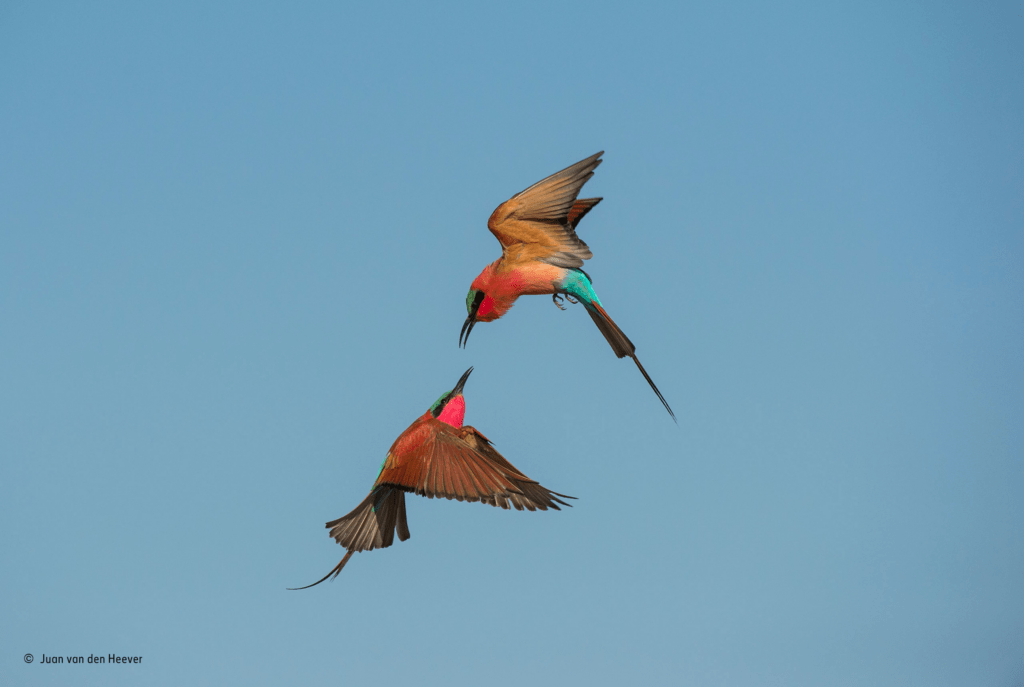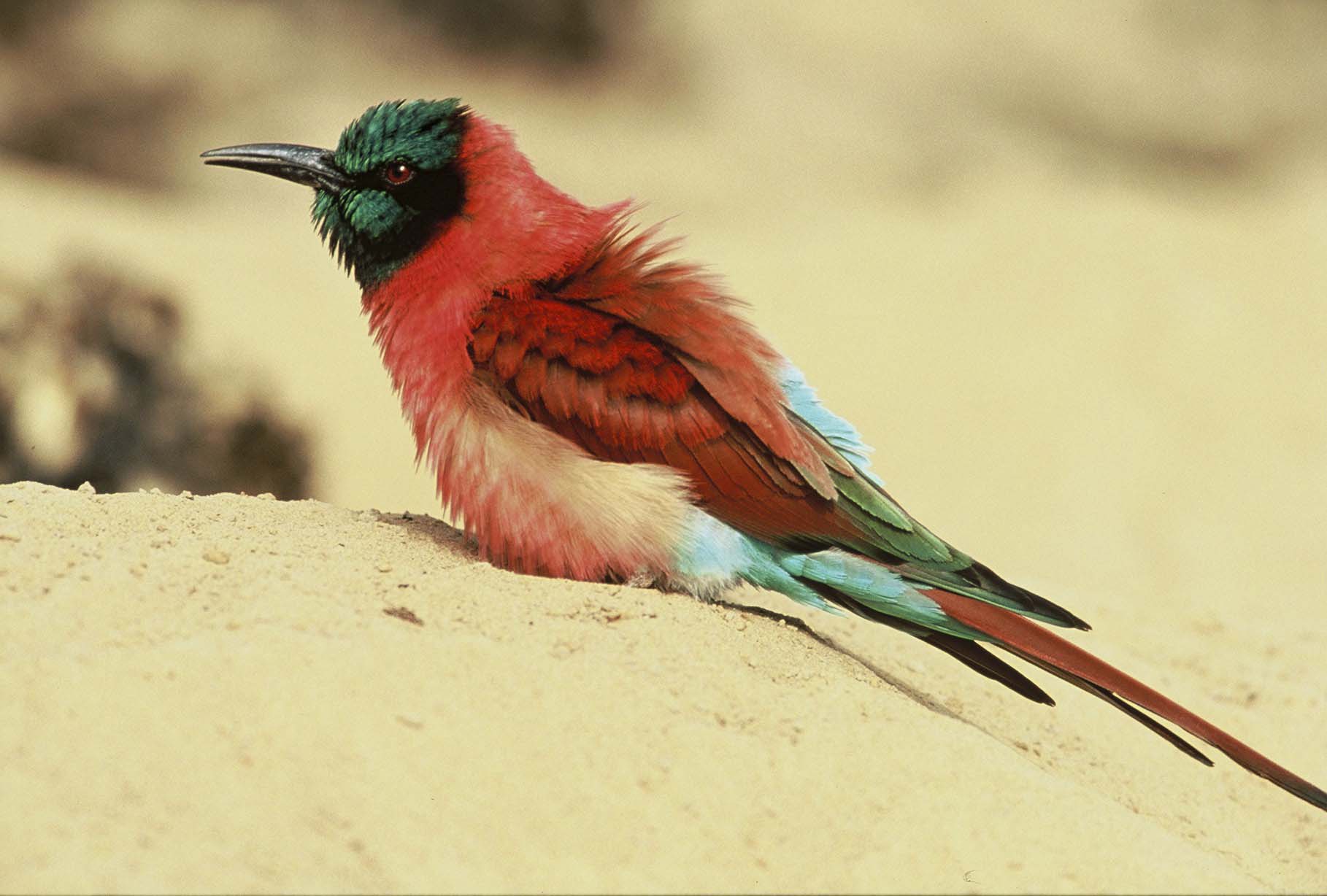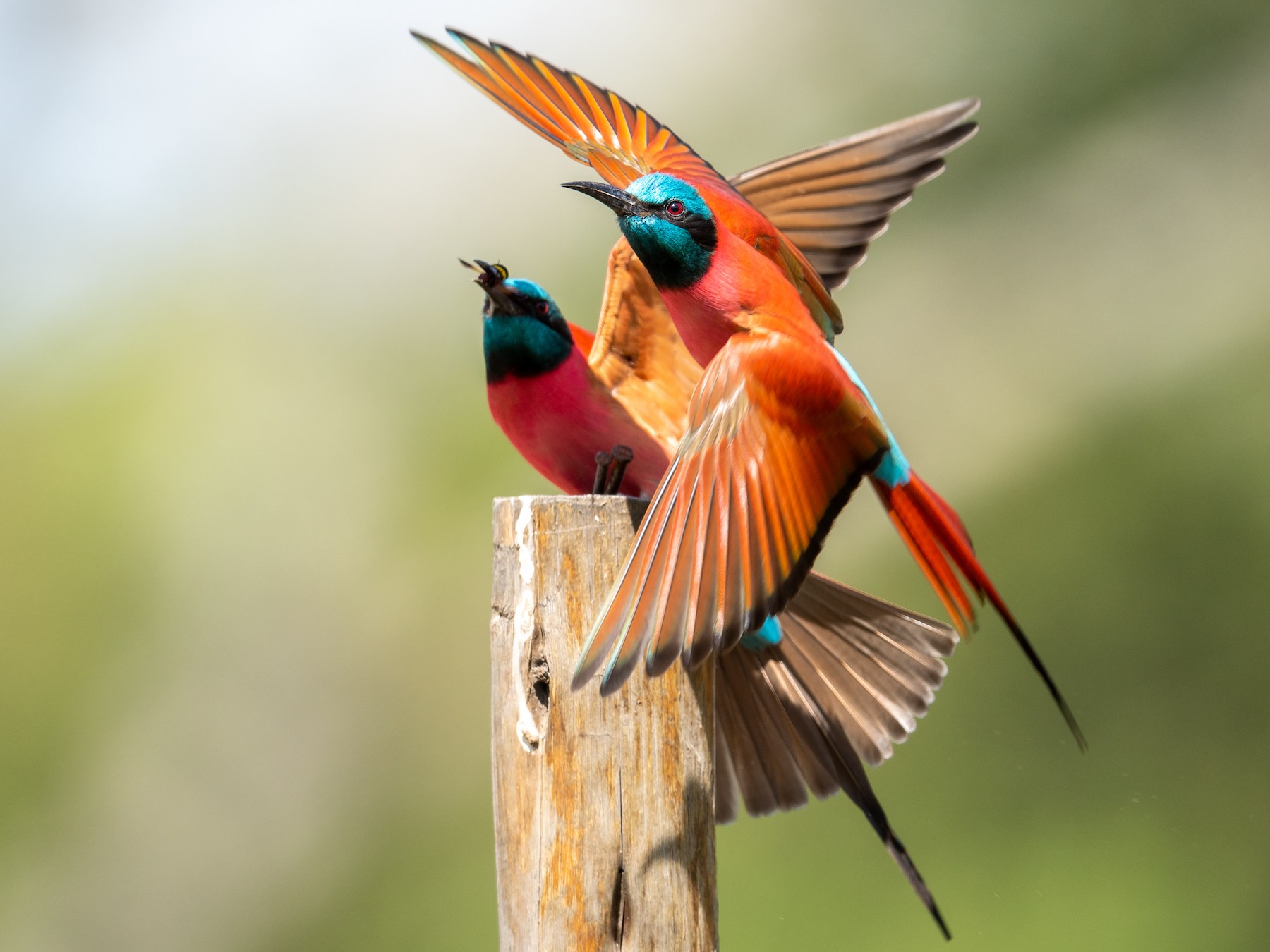Journey into Splendor: Unveiling the Exquisite Carmine Bee-eater, a Kaleidoscope of Beauty that Awakens the Senses

The Northern Carmine Bee-eater is a species of bird where both males and females exhibit striking similarities in appearance, with potential variations in eye color. This particular bird is renowned for its exceptional beauty and is considered the largest and most colorful among the bee-eater family. Scientifically known as Merops nubicus or M. n. nubicus, it showcases a mesmerizing carmine hue predominantly covering its feathers. Its head and throat feature a striking green-blue color, complemented by a unique black mask. The slim body structure is accompanied by a sharp black beak and red eyes. With its sharp talons, it gracefully perches on perpendicular surfaces.

The Northern Carmine Bee-eater species displays a remarkable resemblance between males and females, with the exception of possible variations in their eye color. These birds are naturally found in central and northern parts of Africa, such as Cameroon, Benin, and the Central African Republic.
It comes as no surprise that the Northern Carmine Bee-eater feeds heavily on bees. However, they also enjoy a variety of other flying insects like ants, grasshoppers, and locusts. These birds are swift and nimble as they sit on branches, diligently scanning for insects to snatch mid-flight.
Birds of this kind gather in large groups and usually construct their homes on cliffs or near bodies of water. They create nesting tunnels that can stretch up to eight feet long or even more. When it comes to reproduction, the female of this species lays a maximum of five eggs at a time. The incubation process and the upbringing of the little ones are shared responsibilities between both parents. It takes around 21 to 32 days for the chicks to become fully fledged. However, even after this period, the parents continue to provide food until the chicks are capable of hunting on their own.
Due to its wide distribution, the Northern Carmine Bee-eater is presently not considered to be in imminent danger of population decline.









